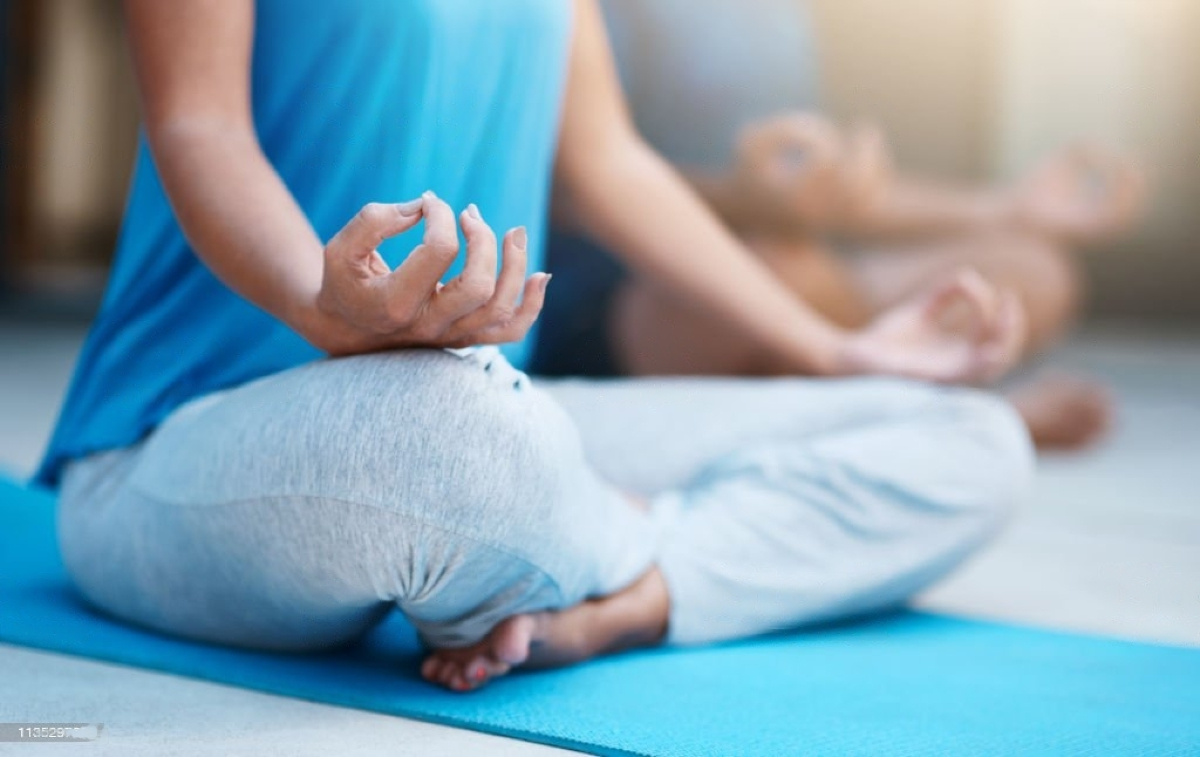The importance of posture in meditation
As meditation gains traction for its numerous benefits, it’s essential to understand that there isn’t a one-size-fits-all approach. With various techniques and styles, you can create a meditation practice that suits your unique needs and preferences. Your practice may evolve, and it’s crucial to stay adaptable.
In this article, we’ll explore different meditation positions, how to maintain proper posture, and why it matters in your practice.
Meditation can be performed in various positions, including sitting in a chair, standing, kneeling, or lying down. The key is finding a position that allows you to relax and focus on meditation while maintaining proper posture.
Sitting in a chair
Meditating in a chair is an excellent option for practicing during a workday or travelling. To get in the right position, sit straight back and your feet flat on the floor, forming a 90-degree angle with your knees. Place a pillow behind your lower back or your hips for added support. Rest your hands on your knees or in your lap.
Standing meditation
For those who prefer being upright, standing meditation is worth trying. Stand tall with your feet shoulder-width apart and heels slightly inward. Slightly bend your knees and place your hands on your belly to feel your breath moving through your body.
Kneeling meditation
Kneeling meditation can be more comfortable for some people as it’s easier to maintain a straight back. Rest on bent knees with your shins flat on the floor and a cushion between your bottom and heels for support. Remember to root your weight back and down through your hips to avoid putting too much pressure on your knees.
Lying down meditation
Lying down allows your body to be fully supported and can help you release tension more easily. Lie on your back with arms extended alongside your body and your feet hip-distance apart. Modify the pose by placing a pillow under your knees or bending your knees and placing your feet flat on the ground.
Proper posture plays a vital role in meditation as it helps set a positive intention for your practice. The seven-point meditation posture is a helpful guideline to position your body while sitting correctly:
Sitting position: Choose a comfortable pose, such as cross-legged or in a lotus position, and use a cushion or meditation bench for support.
Spine: Keep your spine straight as possible, lengthening with each inhale.
Hands: Rest your hands on your thighs or stack them in your lap with palms facing up.
Shoulders: Relax your shoulders, drawing them slightly back and down to keep your heart center open and your back strong.
Chin: Tuck your chin in slightly, maintaining the length in the back of your neck.
Jaw: Release tension in your jaw by keeping it slightly open and pressing your tongue against the roof of your mouth.
Gaze: Softly close your eyes or gaze unfocused on the floor a few feet ahead.
To enhance your meditation practice, start with shorter sessions and gradually increase the duration, focus on your breath, observe your thoughts and sensations without judgment, and practice mindfulness throughout the day.
Remember, there’s no wrong way to meditate; your practice should be tailored to your needs. Seek guidance from a yoga teacher or explore guided meditations online to help you develop your practice further.
Optimizing Your Meditation Space and Routine
To create a supportive environment for your meditation practice, consider the following suggestions:
Designate a meditation space: Choose a quiet, comfortable spot in your home where you can meditate without distractions. A dedicated space can help reinforce your practice and make it easier to establish a consistent routine.
Use props: Use cushions, pillows, or blankets to make your meditation position more comfortable. Props can help you maintain proper posture and reduce physical discomfort that might distract you from your practice.
Create a calming atmosphere: Set the mood using soft lighting, candles, or essential oils. You can also incorporate calming sounds, such as gentle music or nature sounds, to help you relax and focus.
Set a meditation schedule: Establish a consistent meditation routine by choosing a specific time of day to practice. Mornings and evenings are often recommended, as they can help set the tone for the day or prepare you for sleep. However, choose a time that best suits your lifestyle.
Keep track of your progress: Use a meditation journal to record your thoughts, insights, and experiences. This can help you stay motivated and track your progress over time.
Start with guided meditations: If you’re new to meditation or struggling to maintain focus, consider using guided meditation apps or videos to help you stay on track and develop your practice.
Be patient with yourself: Meditation is a skill that takes time and practice to develop. Be gentle with yourself, and remember that progress may be slow at first. With consistency, you’ll likely notice improvements in your focus, relaxation, and overall well-being.
Join a meditation group or class: Practicing with others can provide support, encouragement, and camaraderie. Look for local meditation groups or classes, or consider joining online communities and forums.
Experiment with different meditation techniques: As you become more comfortable, explore various techniques to discover what works best. Some popular methods include mindfulness, loving-kindness, body scan, and transcendental meditation.
Prioritize self-care: Incorporate other self-care practices into your routine to support your well-being. Exercise, healthy eating, and good sleep hygiene can all contribute to more effective meditation practice.
In conclusion, finding the right meditation position and creating a supportive environment are essential to developing a successful practice. Remember to be patient and adapt your practice to suit your needs. As you progress, meditation may be invaluable for enhancing your well-being and cultivating mindfulness daily.


Give a Reply